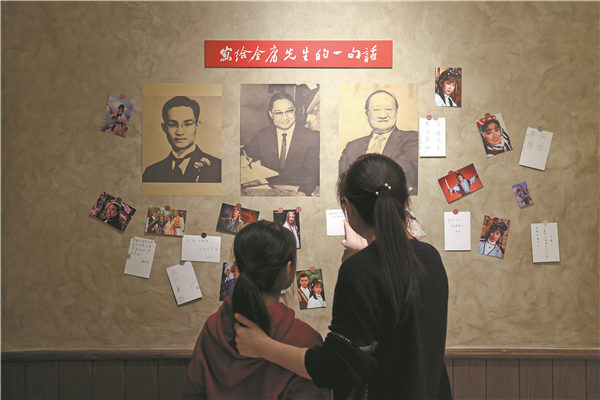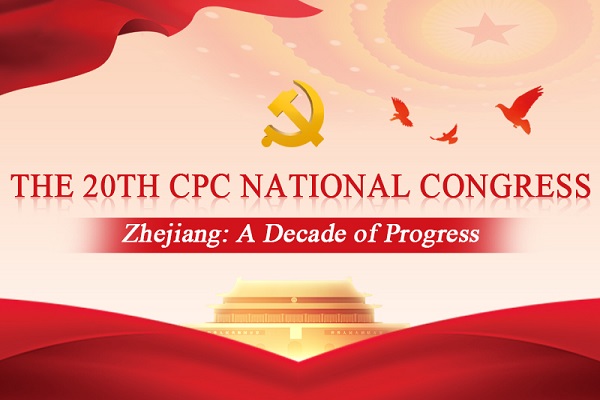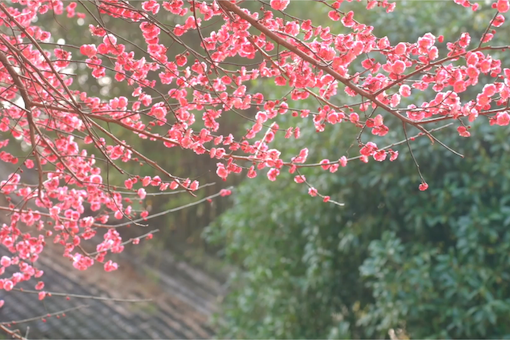A novel luminary of martial arts stories

Exhibitions held earlier this month to commemorate him in Hubei province. [Photo provided to China Daily]
Haining's government constructed the traditional garden house Jin Yong Shuyuan in Yanguan town in 2008 with Jin Yong's personal support. It serves as a center for the exhibition and research of his literary and academic achievements.
On March 11, a 3D-animated video featuring the imagery of Jin Yong's novels was projected on Jiaxing's ancient city wall that was rebuilt in 1908. Jin Yong's novels served as the theme of the evening marketplace near the wall in March. The streets were decorated with red lanterns, and musicians played live music from TV series, adapted from his novels. Actors dressed as characters in his books were walking around, buying snacks and souvenirs.
Wuxia tales were found in Chinese literature as long ago as the second and third centuries BC. Jin Yong was fascinated with these tales of adventure from an early age.
The chivalrous and rebellious heroes depicted in traditional Chinese wuxia stories seemed to have left their mark on his mindset during his youth. Jin Yong was expelled from school twice. The first time was from senior middle school because he wrote a satirical essay about the director of discipline. The second time was from a central university in Chongqing where he studied, because he was disrespectful to the headmaster.
In 1947, he became a journalist for Ta Kung Pao in Shanghai. The second year, the newspaper sent him to work in Hong Kong. Later, he was transferred to New Evening Post as deputy editor and began to write his first martial arts novel. The Book and the Sword was serialized in 1955.
In 1959, he co-founded the newspaper, Ming Pao. He served as its editor-in-chief for years, while also writing serialized novels.


 A look at Jiaxing's H1 economic data
A look at Jiaxing's H1 economic data Red boat spirit inspires new developments
Red boat spirit inspires new developments Zhejiang: A Decade of Progress
Zhejiang: A Decade of Progress